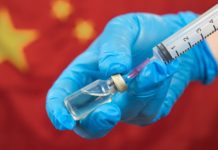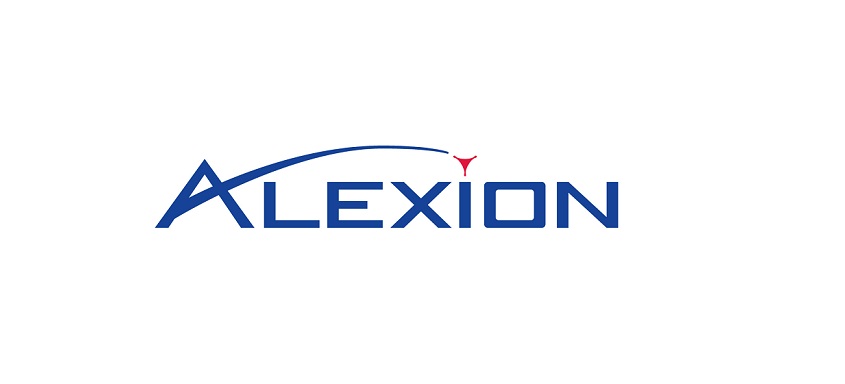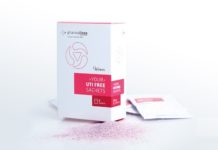Alexion Pharmaceuticals, Inc. announced that the pivotal Phase 3 study of ALXN1210, the Company’s investigational long-acting C5 complement inhibitor, demonstrated non-inferiority to Soliris® (eculizumab) in complement inhibitor treatment-naïve patients with paroxysmal nocturnal hemoglobinuria (PNH) based on the co-primary endpoints of transfusion avoidance and normalization of lactate dehydrogenase (LDH) levels, a direct marker of complement-mediated hemolysis in PNH.
The study also demonstrated non-inferiority on all four key secondary endpoints: percentage change from baseline in LDH levels, change from baseline in quality of life as assessed by the Functional Assessment of Chronic Illness Therapy (FACIT)-Fatigue scale, proportion of patients with breakthrough hemolysis, and proportion of patients with stabilized hemoglobin levels. In addition, numeric results for all six endpoints favored ALXN1210. There were no notable differences in the safety profiles for ALXN1210 and Soliris®.
Since non-inferiority was achieved across both co-primary and all four key secondary endpoints, the protocol allowed for superiority testing. The hierarchical testing order pre-specified breakthrough hemolysis as the first endpoint tested for superiority. Although ALXN1210 did not achieve superiority, a numeric trend in favor of ALXN1210 was observed for breakthrough hemolysis (4.0% [0.6%,7.4%] vs. 10.7% [5.2%,16.3%] for Soliris®) with a p-value of 0.074.
The study also confirmed that ALXN1210 provides immediate and complete (>99%) inhibition of the complement C5 protein that is sustained over the entire 8 week dosing interval. Additionally, treatment with ALXN1210 reduced mean LDH levels to approximately the upper limit of normal (1.0-1.1 times ULN) between months one and six.
“We are very pleased with these positive data for ALXN1210 in the first and only head-to-head study versus Soliris, and the results reinforce our ambition to establish ALXN1210 as the new standard of care for patients with PNH. The data are also consistent with our hypothesis that immediate, complete, and sustained C5 inhibition is critical for patients with this potentially life-threatening disease,” said John Orloff, M.D., Executive Vice President and Head of Research & Development at Alexion.
“Soliris has established a high bar for efficacy. Achieving non-inferiority on both co-primary and all key secondary endpoints, as well as seeing numeric results in favor of ALXN1210, in such a rigorous study met a very high hurdle. We look forward to regulatory submissions of ALXN1210 in PNH in the U.S., EU, and Japan in the second half of 2018.”
“Having a new treatment option that achieves transfusion avoidance, and provides rapid and sustained normalization of LDH levels when administered 6 times a year could be a meaningful improvement for patients with PNH who currently need 26 infusions per year,” said Jong Wook Lee, M.D., Professor of Internal Medicine, Seoul St. Mary’s Hospital, The Catholic University of Korea, Seoul, Korea, and an investigator in the ALXN1210 study.
ALXN1210 was generally well tolerated with a safety profile that is consistent with that seen for Soliris®. The most frequently observed adverse event was headache. The most frequently observed serious adverse event was pyrexia. One patient in the Soliris® arm died from lung cancer (unrelated to Soliris® treatment) during the extension phase of the study. Two patients withdrew from the Soliris® arm for reasons unrelated to treatment.
One anti-drug antibody was observed for ALXN1210 and one for Soliris®. No neutralizing antibodies and no apparent effects on efficacy, safety, pharmacokinetics, or pharmacodynamics were detected.
There were no cases of meningococcal infection observed in either the ALXN1210 or Soliris® arms. Meningococcal infections are a known risk with terminal complement inhibition, and specific risk-mitigation plans have been in place for ten years for Soliris® to minimize the risk for patients.Detailed results from this Phase 3 study will be presented at a future medical congress.
About the ALXN1210-PNH-301 Study
This Phase 3, randomized, open-label, active-controlled, multinational, and multicenter study evaluated the efficacy and safety of ALXN1210 compared to Soliris® administered by intravenous (IV) infusion to adult patients (≥ 18 years of age) with PNH who are naïve to complement inhibitor treatment. The study enrolled 246 adult patients with a confirmed diagnosis of PNH who had never been treated with a complement inhibitor and presented with LDH levels ≥ 1.5 times the upper limit of normal (ULN) at the time of screening, as well as with one or more of the following PNH-related signs or symptoms within 3 months of screening: fatigue, hemoglobinuria, abdominal pain, shortness of breath (dyspnea), anemia (hemoglobin <10 g/dL), history of a major adverse vascular event (MAVE, including thrombosis), dysphagia, or erectile dysfunction; or history of packed red blood cell (pRBC) transfusion due to PNH.
Patients in the ALXN1210 arm received a single loading dose of ALXN1210, followed by regular maintenance weight-based dosing every 8 weeks. Patients in the Soliris® arm received 4 weekly induction doses, followed by regular maintenance dosing every 2 weeks. Both arms were treated for 26 weeks. The study was designed to evaluate the non-inferiority of ALXN1210 compared to Soliris®.
The co-primary endpoints were the proportion of patients who remain transfusion-free and do not require a transfusion per protocol-specified guidelines through day 183 and the normalization of LDH levels as directly measured every two weeks by LDH levels ≤ 1 times ULN from day 29 through day 183. Key secondary endpoints included the percentage change from baseline in LDH levels to day 183, change from baseline in quality of life as assessed by the FACIT-Fatigue scale to day 183, proportion of patients with breakthrough hemolysis, and proportion of patients with stabilized hemoglobin levels (defined as avoidance of a ≥ 2 g/dL decrease in hemoglobin level from baseline in the absence of transfusion through day 183).
Breakthrough hemolysis was defined as at least one new or worsening symptom or sign of intravascular hemolysis: fatigue, hemoglobinuria, abdominal pain, shortness of breath (dyspnea), anemia [hemoglobin < 10 g/dL], MAVE (including thrombosis), dysphagia, or erectile dysfunction in the presence of an elevated LDH level ≥ 2 times ULN, after prior LDH level reduction to < 1.5 times ULN on therapy. Blood samples for the determination of free and total complement C5 protein were collected before and after administration of study drug once a week during the first 4 weeks and every two weeks after that.All patients enrolled in an extension study of up to 2 years, during which they will receive ALXN1210 every 8 weeks.


























